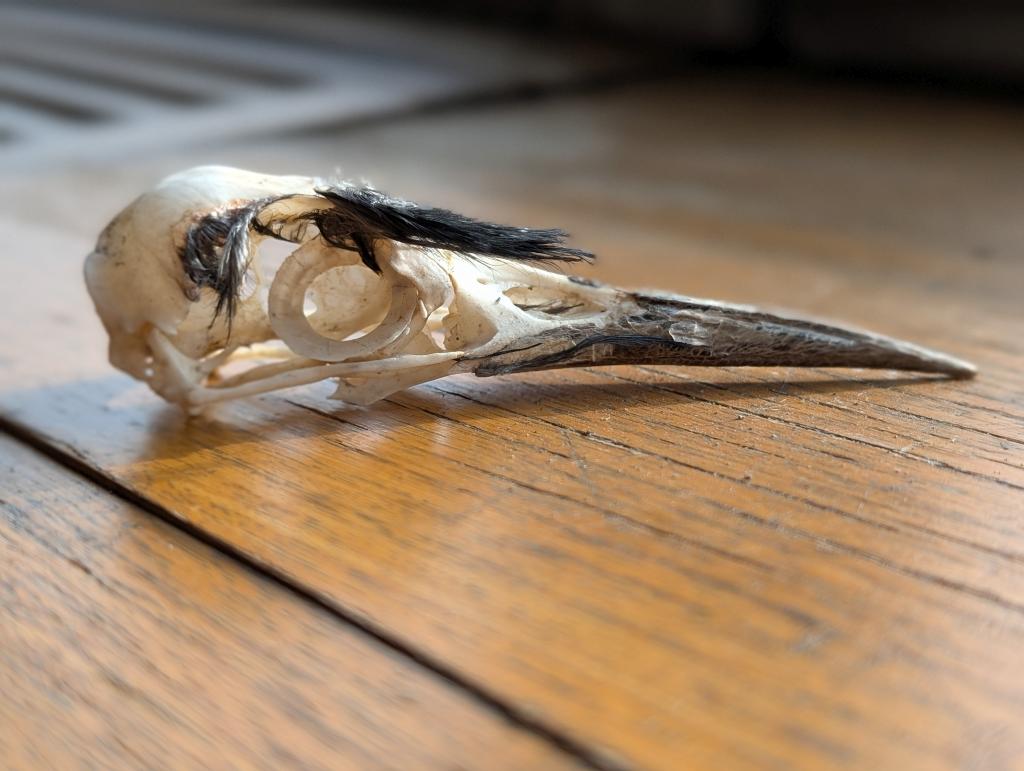
11 January 2025
Yesterday the Univ of Pittsburgh, the National Aviary, and I prepared for the upcoming peregrine nesting season by cleaning the nestbox and falconcams.
After examining the indoor side of the camera equipment Bob Mulvihill of the National Aviary and Gracie Jane Gollinger from Pitt IT braved 10°F weather on the ledge. Camera cleaning went well despite the cold weather and there was nothing to clean at the nestbox. However …
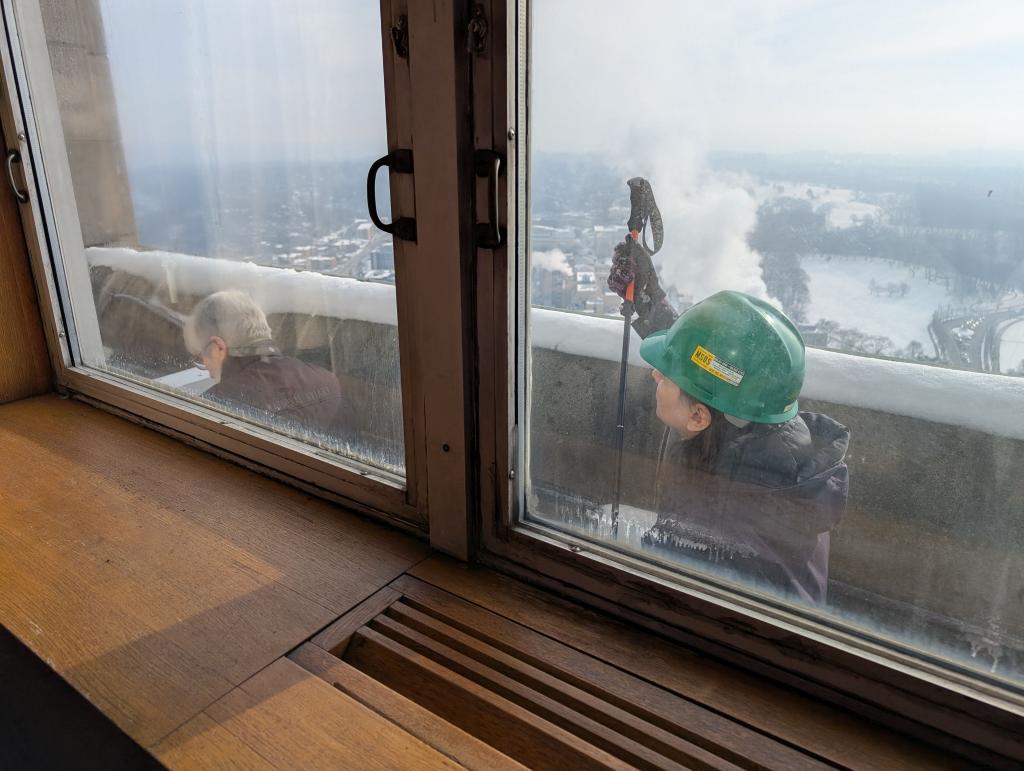
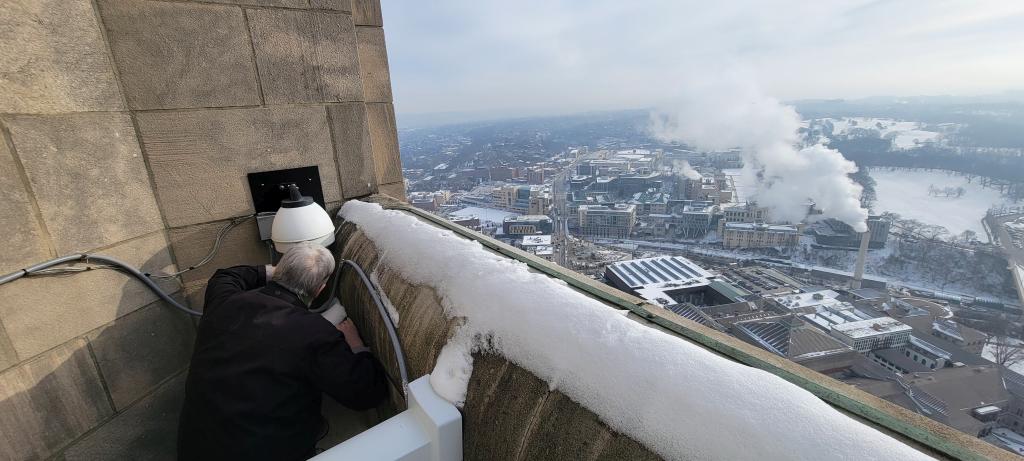
When Bob stepped out on the landing that leads to the cameras, we were amazed that the area at his feet was strewn with partially eaten prey. I kept a list. Some were hard to identify.
- Rock Pigeon (Feral) 1
- Yellow-billed Cuckoo 3 or 4
- Black-billed Cuckoo 1
- Pileated Woodpecker 1
- Northern Flicker 1 (yellow feathers)
- European Starling 1
- Wood Thrush 2 or 3
Up to 5 cuckoos! The landing was clean when the chicks were banded on 21 May 2024 so the cache was left since then.

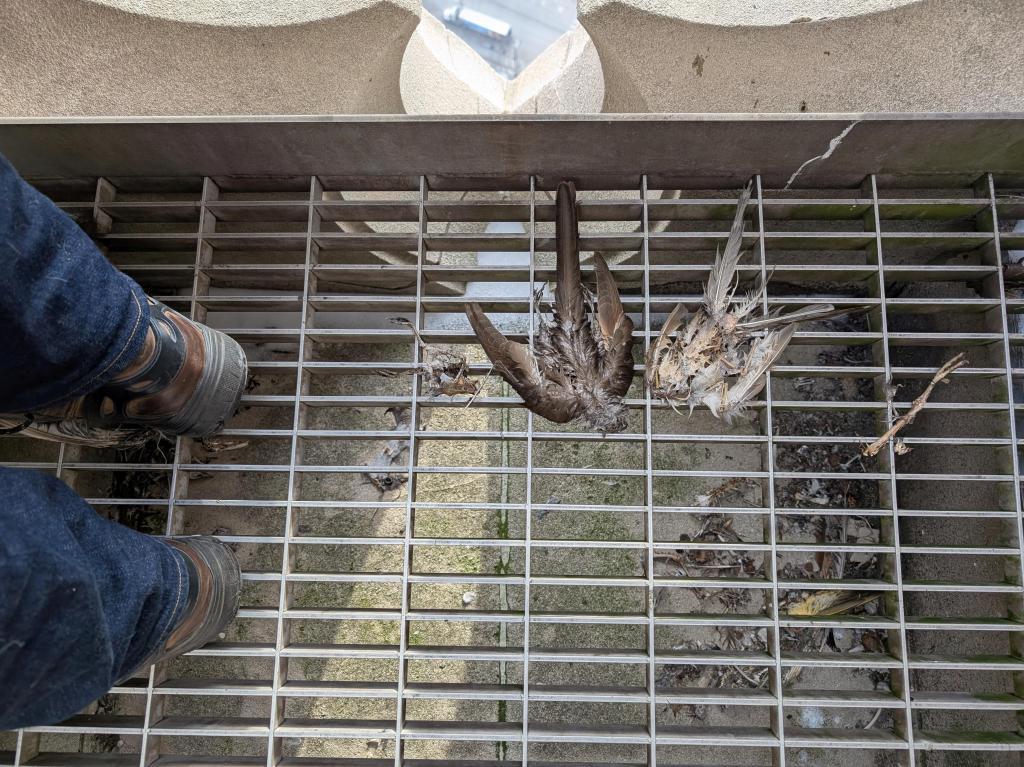
The most interesting find was the skull of a pileated woodpecker. I assumed that peregrines would never capture a bird with such a dangerous beak but I was wrong.

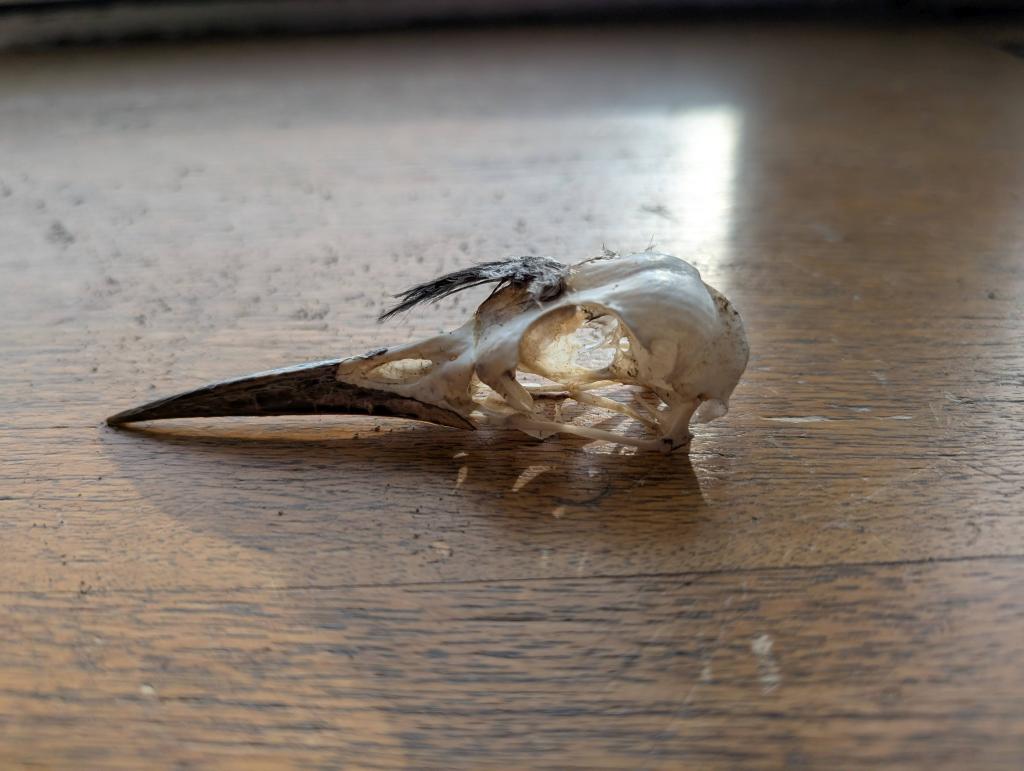
Why so many prey items at this spot? Perhaps it was a favorite dining area where the adults dropped off food for last year’s youngsters.
Why so many cuckoos? The Pitt peregrines have always had a fondness for cuckoos, probably because their flight is floppy which makes them easy to catch. My only regret is that the peregrines caught so many cuckoos and wood thrushes.
Here’s the crew after our successful visit.

We’re ready for Peregrine Season!
You are some hardy folks. Think we’re all ready for the season to begin.
Thanks for sharing, Kate. What an interesting smorgasbord of entrees! Wonder what bird would garner the the highest price on this menu? Thanks to Bob & Gracie for braving the cold to get things cleaned up and ready for a hopefully successful peregrine mating season.
Hello.
I love peregrine falcons ever since I was a child and read My Side of the Mountain. Is there a site where I can view via your camera? Thanks
Lisa, outside the breeding season there are still shots at this link: https://birdsoutsidemywindow.org/birdblog_slideshows/Cathedral_refreshCam.html
Stay tuned for the live stream link in early February.